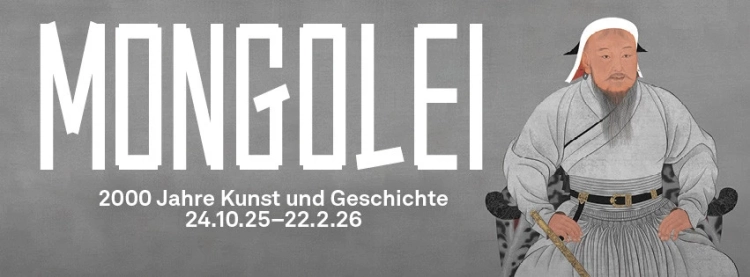
The Saka tribes were divided into three parts. In the southern regions of Kyrgyzstan lived the...

The first reliable traces of humans on the territory of Kyrgyzstan date back to the Paleolithic —...

The main landscape of Kyrgyzstan consists of mountains. Enclosed mountain valleys are surrounded...

Kyrgyzstan is one of the world’s centers of human emergence, statehood, and civilization. The life...

We do not have data on the development of science and education among the nomadic peoples of...

The State Historical Museum of the Kyrgyz Republic is one of the largest museums in Central Asia....

The ancient Turkic nomads who inhabited the territory of Kyrgyzstan left behind unique monuments —...

The military art that prevailed during the ancient and medieval periods among the nomadic tribes...

The foundation of marital and family relationships among the nomadic population of ancient...

The Flourishing of Medieval Kyrgyz Culture The era of "Kyrgyz Great Power" became a time...

Findings from the Saka-Usun Period Strict scientific evidence for the development of agriculture...

Renewal of Archaeological Research in the Inner Tian Shan The continuation of A.N....

The head of the International Historical and Archaeological Expedition at Issyk-Kul, Academician...

National Clothing and Costumes of the Kyrgyz The formation and development of the national costume...

Archaeological Finds of Kyrgyzstan In the summer of 1960, parts of the skeleton of a large mammal,...

The traces of primitive human activity in the territory of the Kyrgyz Republic date back to the...

It is known that the Bronze Age in Fergana was universally replaced by the time of the dominance...

Late Medieval Period (14th—15th centuries). Saka-Usun Period (5th century BC). This period is...

Dzhumgal Domes — nameless domes. There are many of them in the Dzhumgal district. They are now...

The tribal communities inhabiting the Central Tien Shan, Issyk-Kul, Chui, and Talas valleys...

NEW ASPECTS IN THE CULTURE OF EARLY NOMADS OF THE TIEN SHAN On the territory of Inner Tien Shan,...

Metal Processing by Kyrgyz Another material used for making dishes and household items was metal....

In the 2nd century BC, the Tian Shan Sakas were defeated by another powerful nomadic alliance —...

The structure, organization, and supply of the armed forces of the Kyrgyz during that period were...

Archaeologists claim that the region of Pre-Issyk-Kul was inhabited by ancient humans during the...

Stone Tools of Sarybulun Even in the best books about the culture of ancient pastoralists, which...

Since the Sakas did not have a centralized state, they did not conduct a specific foreign policy....

Kyzyl-Say and Kulan-Say Burial Mounds in the Talas Valley The systematic study of Bronze Age...

Saka and early Usun with Europoid-Mongoloid features. The formation of the anthropological...

What do Kyrgyz burial sites tell us? At the turn of the early Middle Ages, the Kyrgyz found...

A.N. Bernstein's Interest in the Ethnogenesis of Turkic Peoples During the war years, A.N....

Irrefutable Evidence by Yu. A. Zadneprovsky The focus of the research institutes of the Soviet...

Artistic Crafts: Traditions and Modernity The decorative and applied arts of various territorial...

Tashravata Burial Grounds Materials from Kairagach are of great scientific value, as they help to...

Linguists from the USA and Britain compared the meanings of the most basic and simple words in 80...

Internal Political Struggle of the Usuns for Supreme Power The internal political history of the...

The Karakhanid period, as the apex of Turkic civilization, was a time when science and education...

Ruins at the bottom of Lake Issyk-Kul Attention remains focused on the underwater ruins of...

When was life flourishing? Even a brief overview of the material culture with a short excursion...

The food culture of the Kyrgyz has a deep history. The formation of its main ethno-cultural...

Culture of Southwestern Fergana In the southwestern foothills of Fergana, a multi-sector economy...

Secret places of the planet. The Kyrgyz are one of the oldest peoples of Central Asia. They...

This exhibition aims to showcase the evolution and historical development of urban planning in...

Professor Yuri Alexandrovich Zadneprovsky. Born in 1924 in Gatchina, Leningrad region. Participant...

Bernsham in the Popularization of the Epic "Manas" During the celebration of the...

The economy of Kyrgyzstan during the era of Turkic states experienced syncretic development (a...

The Infiltration of Yenisei Kyrgyz into the Tian Shan Our task is to examine the issues regarding...

ASSASSINATION ATTEMPT In the palace of the Chinese princess, widow of the great ruler of the...